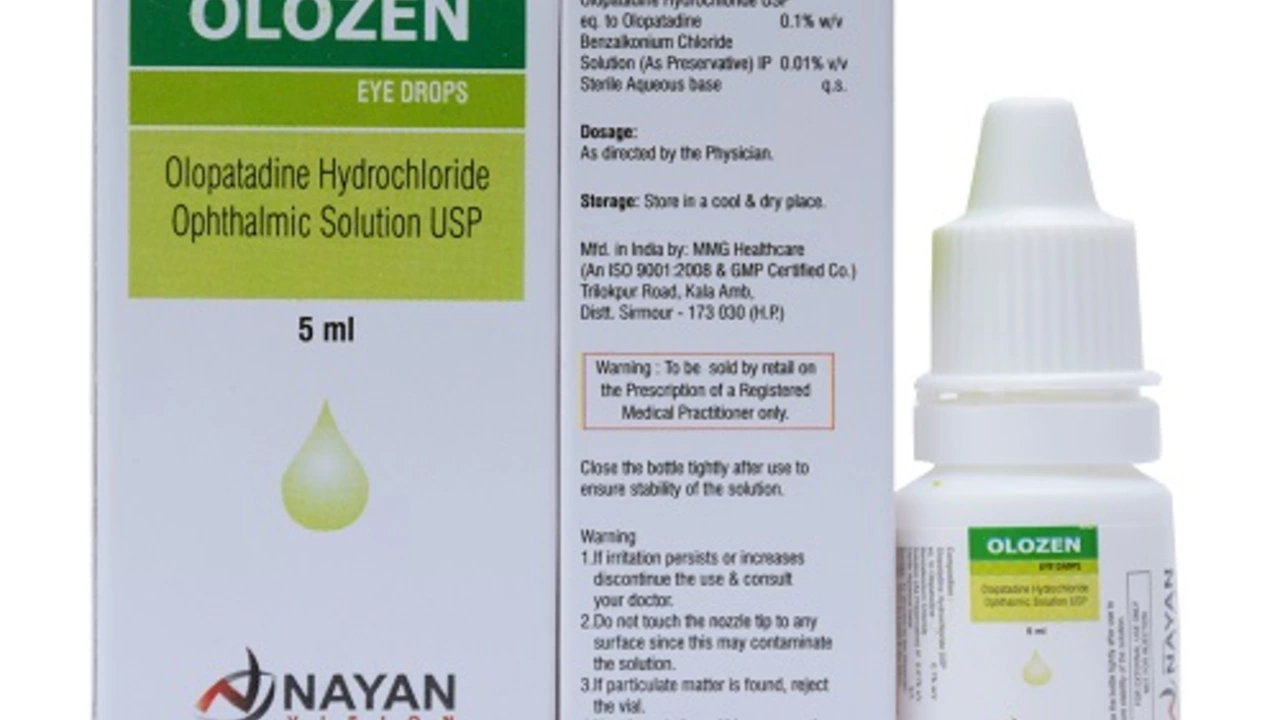Olopatadine HCl: Fast, Simple Relief for Eye Allergies
Got itchy, red, watery eyes when pollen or pets are around? Olopatadine HCl is a common eye drop that many people use for allergic conjunctivitis. It works quickly to stop itching and reduce redness. Below is a practical, no-nonsense guide so you know how to use it, what to expect, and when to talk to a clinician.
How olopatadine HCl works and when to use it
Olopatadine is an antihistamine with mast-cell stabilizing effects. That means it blocks histamine (the chemical that makes your eyes itch) and helps prevent future allergic reactions in the eye. Use it when symptoms are clearly allergic — intense itching, tearing, and redness that come back in similar situations, like outdoors in spring or around pets.
You’ll often feel relief within 15 minutes, and many formulations keep working for 8–24 hours depending on the product. Some brands need a prescription; others may be available over the counter depending on your country and the specific strength.
How to use olopatadine, side effects, and safety tips
Wash your hands. Tilt your head back, pull down your lower eyelid to make a small pocket, and squeeze one drop in each affected eye. Avoid touching the dropper tip to your eye or lashes. If you wear contact lenses, take them out before putting drops in unless the product label says it’s safe with lenses. Wait at least 10 minutes before reinserting lenses.
Typical dosing is one drop in each eye once or twice daily, depending on the product. Follow the label or your prescriber's instructions. If you miss a dose, use it as soon as you remember unless it’s almost time for the next dose — don’t double up.
Common side effects are mild: brief stinging, a bitter taste, dry eyes, or a mild headache. Serious reactions are rare but get help if you have worsening pain, sudden vision changes, swelling of the face or throat, or signs of an infection (pus, severe redness, or a fever).
There’s little systemic absorption, so interactions with other medicines are uncommon. Still, tell your doctor if you’re pregnant, breastfeeding, or on multiple antihistamines. Kids and elderly patients may need dose advice from a provider.
Store drops at room temperature away from direct sunlight and heat. Check the expiry date and throw away the bottle a month or so after opening if the label says to do so. Don’t share eye drops with others — that raises infection risk.
If symptoms don’t improve in a few days, keep getting worse, or if you have eye pain or vision loss, see an eye doctor. Sometimes allergic symptoms overlap with infections or other eye conditions that need a different treatment. For persistent allergies, ask about combined plans: eye drops, oral medicines, or environmental changes (air filters, removing carpets, pet-free zones).
Got questions about brands or whether olopatadine is right for you? Your pharmacist or eye doctor can help you pick the right product and show you how to apply it safely.
Olopatadine HCL for Skin Allergies: What You Need to Know
In my latest post, I delved into the topic of using Olopatadine HCL for skin allergies. This medication is known for treating symptoms associated with allergies and it's crucial to understand how it works. I went into detail about its uses, potential side effects, and precautions to take while using it. It's vital to consult with a healthcare provider before starting any new medication, including Olopatadine HCL. Check out the post for a comprehensive look at this allergy relief option.
View More
